A simple, easy recipe for vegetarian Japchae, also known as Korean glass noodles with stir fried vegetables. It's made with sweet potato starch noodles, colorful vegetables, and tossed in a savory sauce!
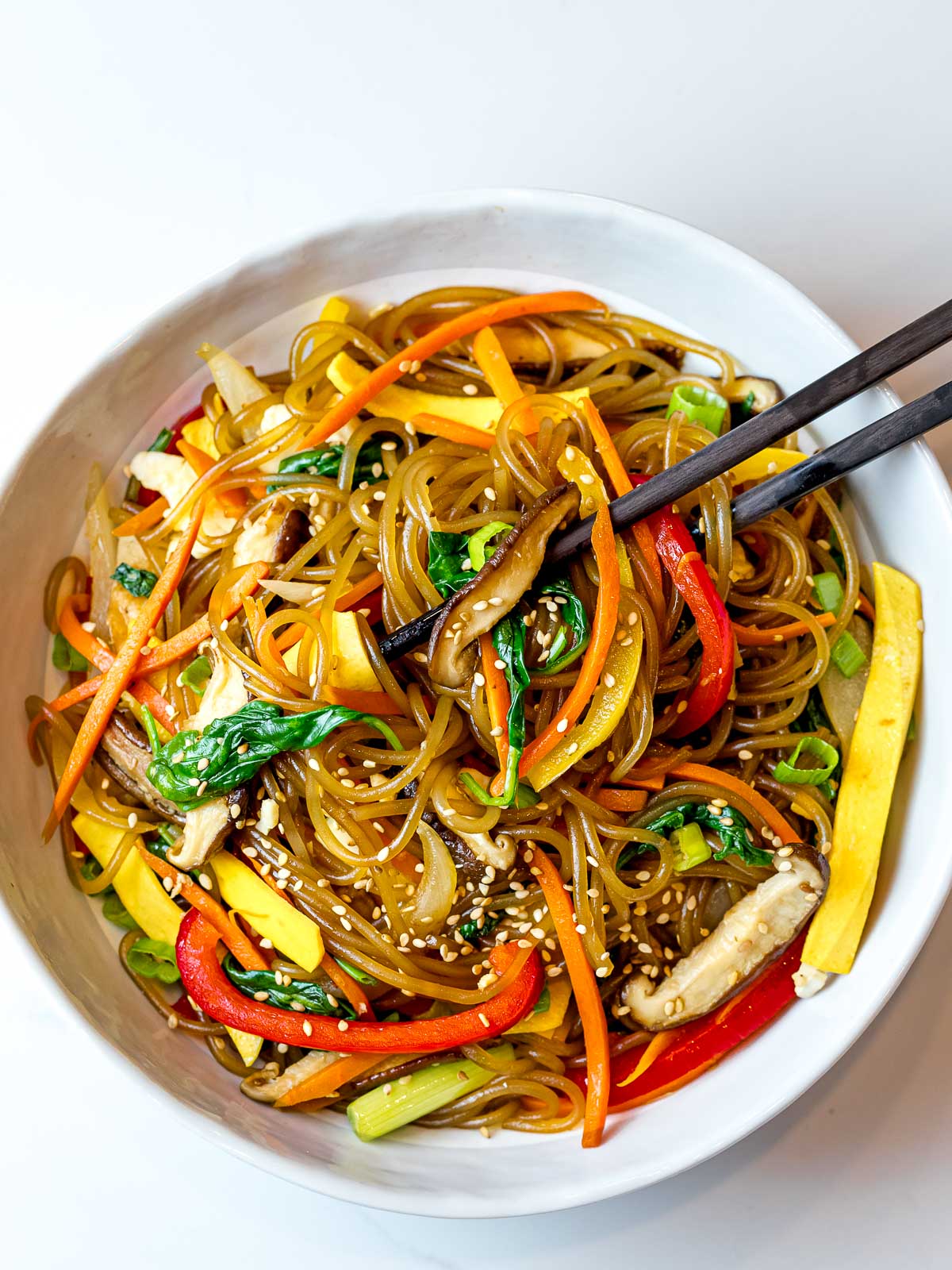
Japchae is a traditional Korean glass noodle dish made with sweet potato starch noodles, stir fried colorful vegetables, protein, and toss together with a sweet and savory soy based sauce.
This is a simple, easy version of vegetarian japchae that cuts down a lot of the prep and cook time. It's ready in under 30 minutes and tastes delicious!
Why you’ll love this recipe
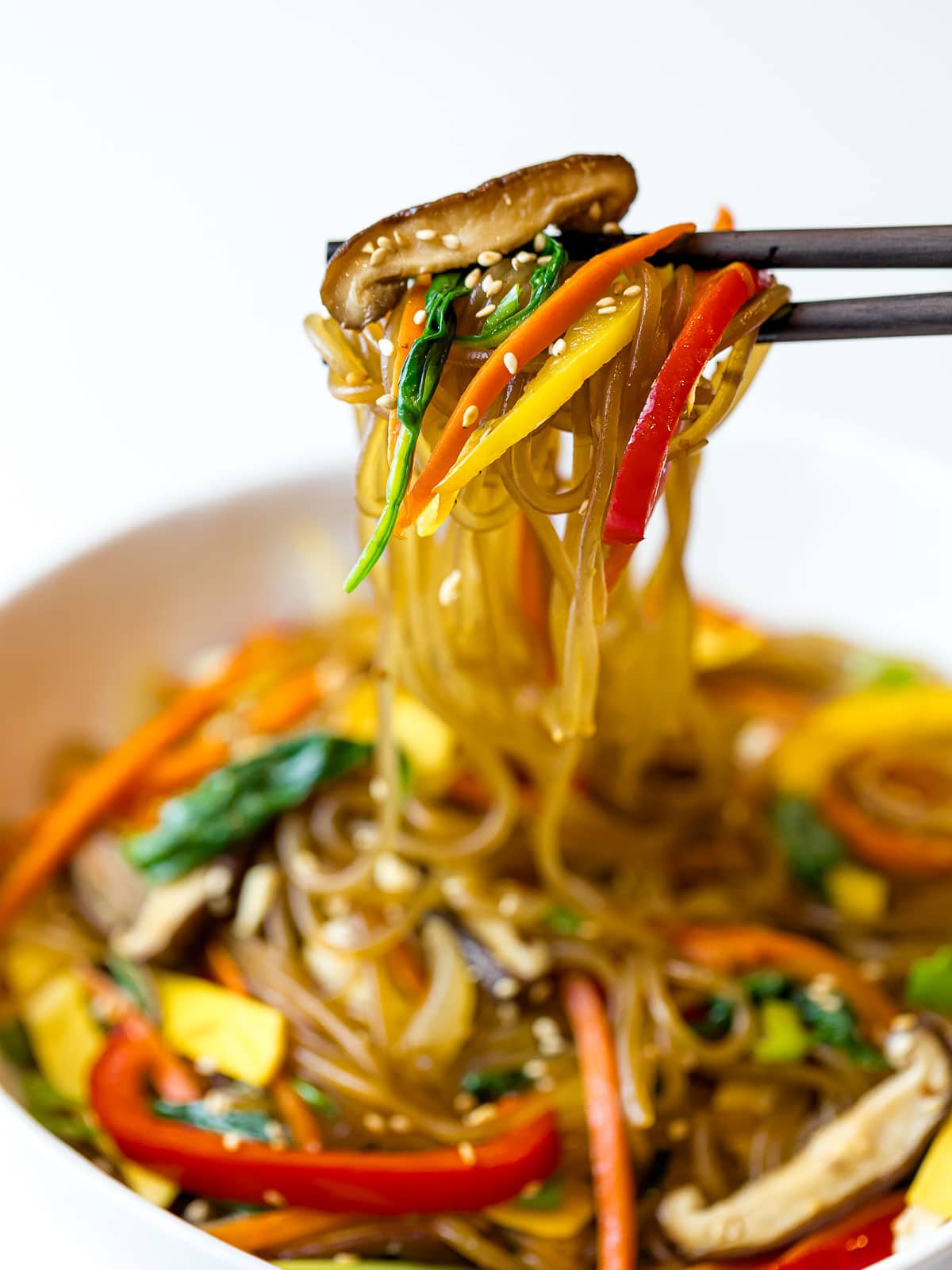
- It's quick and easy! Traditionally, japchae takes a long time because each vegetable is stir fried separately. But this is a simplified, easy recipe that will be ready in under 30 minutes, and it still tastes amazing!
- The Korean glass noodles have a really nice chewy and soft texture. They're great at absorbing sauces and flavors.
- This vegetarian japchae is full of healthy crunchy, colorful vegetables! The carrots, peppers, and onions are stir fried quickly to keep their crunch and add amazing texture to this dish! A great way to get in veggies!
- The japchae sauce is a sweet and savory sauce made of brown sugar, dark soy sauce, and sesame oil. It's the perfect balance of sweet and savory.
- You can make this ahead and serve it the next day. Simply reheat it in the microwave. You can also serve this at room temperature, serve it warm, or even cold. It's very versatile!
Ingredients you’ll need
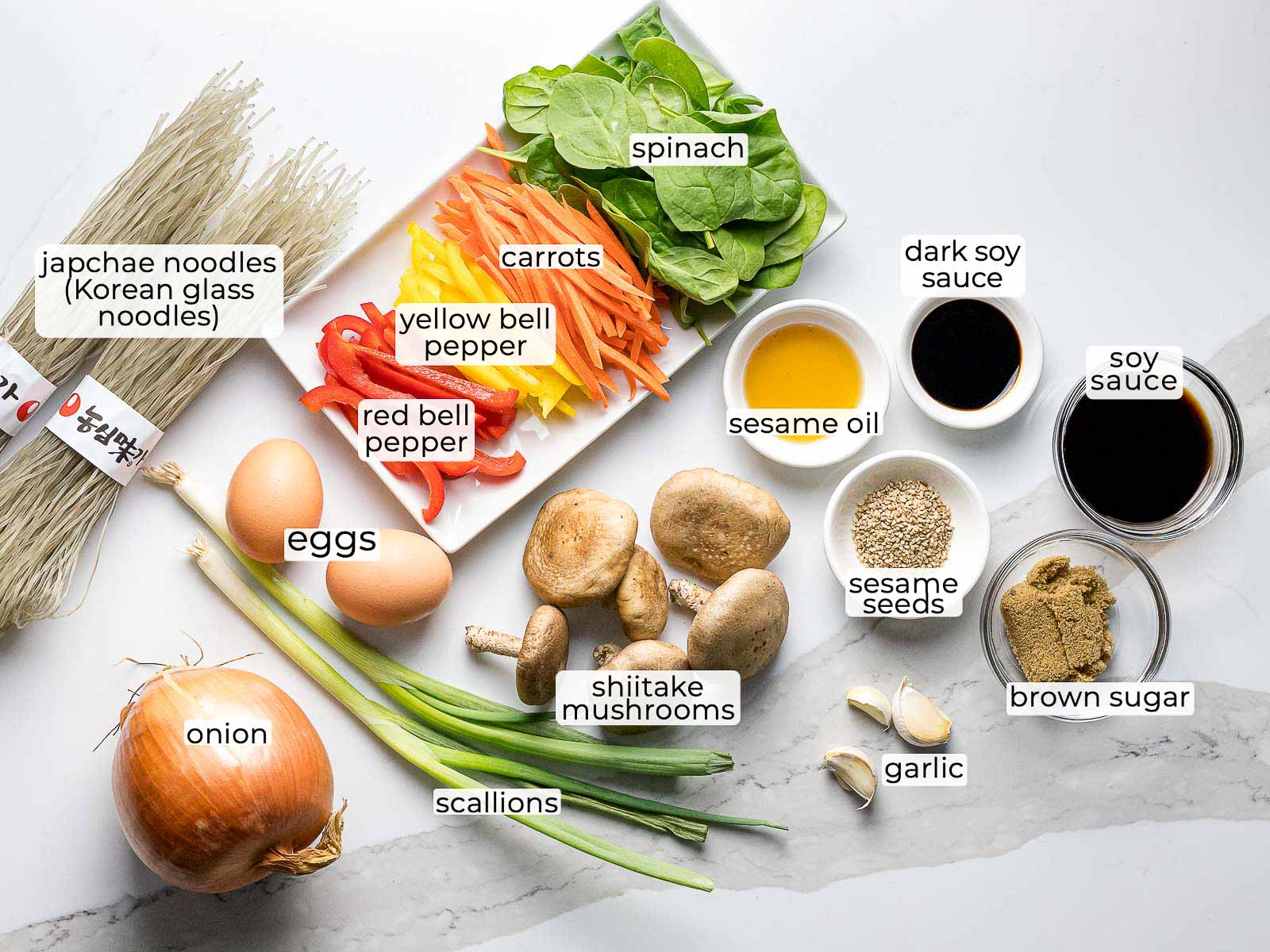
- Korean glass noodles - also known as dangmyeon, sweet potato starch noodles, or japchae noodles. These noodles are slightly chewy and turn translucent when cooked. A must have for making this recipe.
- Shiitake mushrooms - it gives this vegetarian dish a meaty flavor
- Colorful vegetables - red and yellow bell pepper, carrots, spinach
- Soy sauce - a must have for the japchae sauce
- Brown sugar - adds the perfect amount of sweetness
- Dark soy sauce - gives it a deeper color that contrasts beautifully with the colorful veggies
Step by step instructions
- First mix the japchae sauce together in a small bowl and set it aside.

- Boil the Korean glass noodles according to the directions. Be careful not to overcook them. Drain the water and add the sauce to the hot noodles. All the sauce will get absorbed by the noodles after several minutes.
- Cook the egg whites and egg yolks separately in a flat plan. Cut them into strips and set it aside.
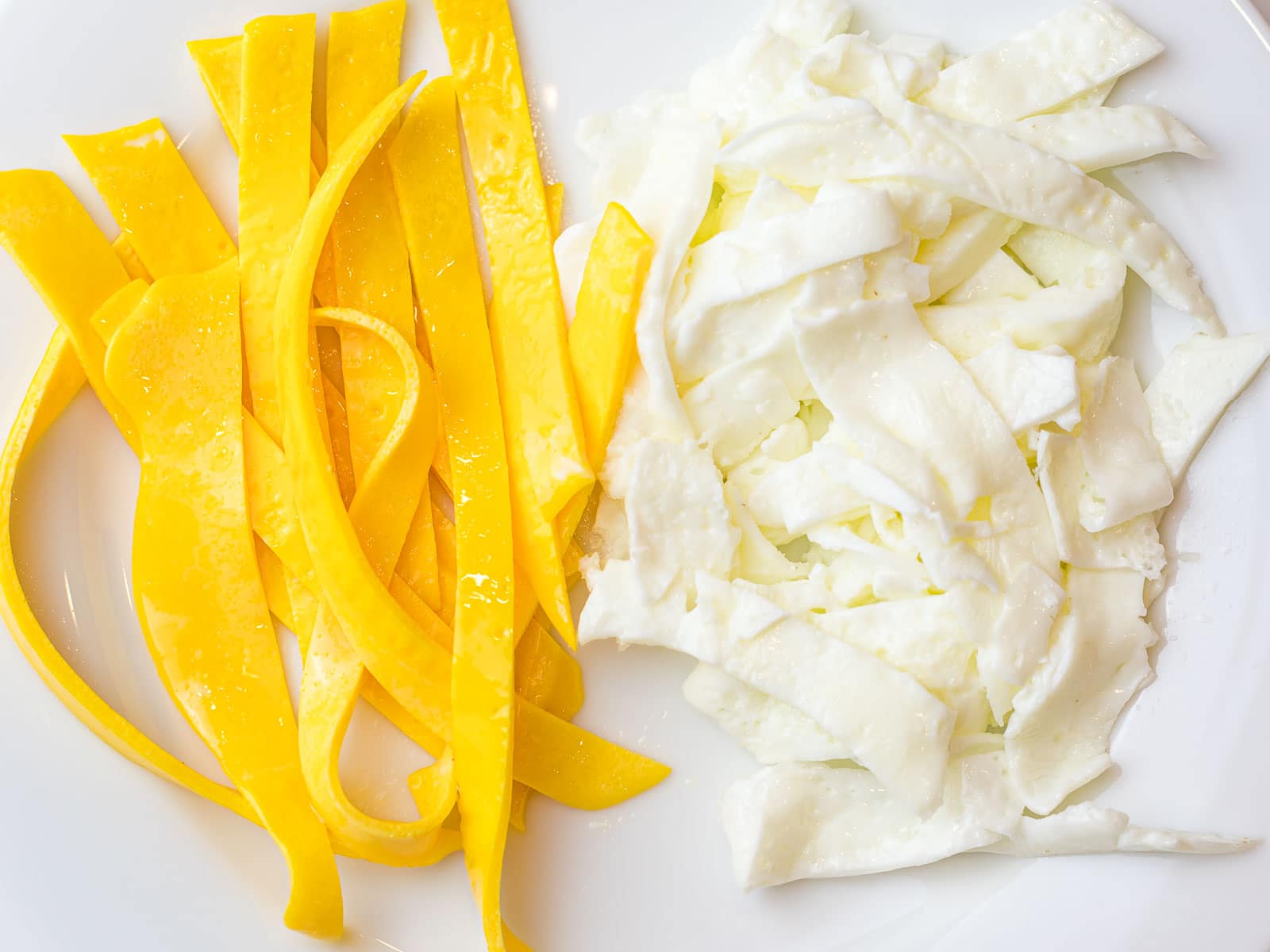
- Heat a pan over medium high heat and start stir frying the mushrooms and onions together. Next add the garlic, carrots, and peppers and stir fry for 1 to 2 minutes.
- Be careful not to overcook the vegetables. They should still have a bit of crunch.
- Finally, add the baby spinach and toss it together until they wilt.
- By now, the noodles should have absorbed all of the japchae sauce and should be a rich, deep color.
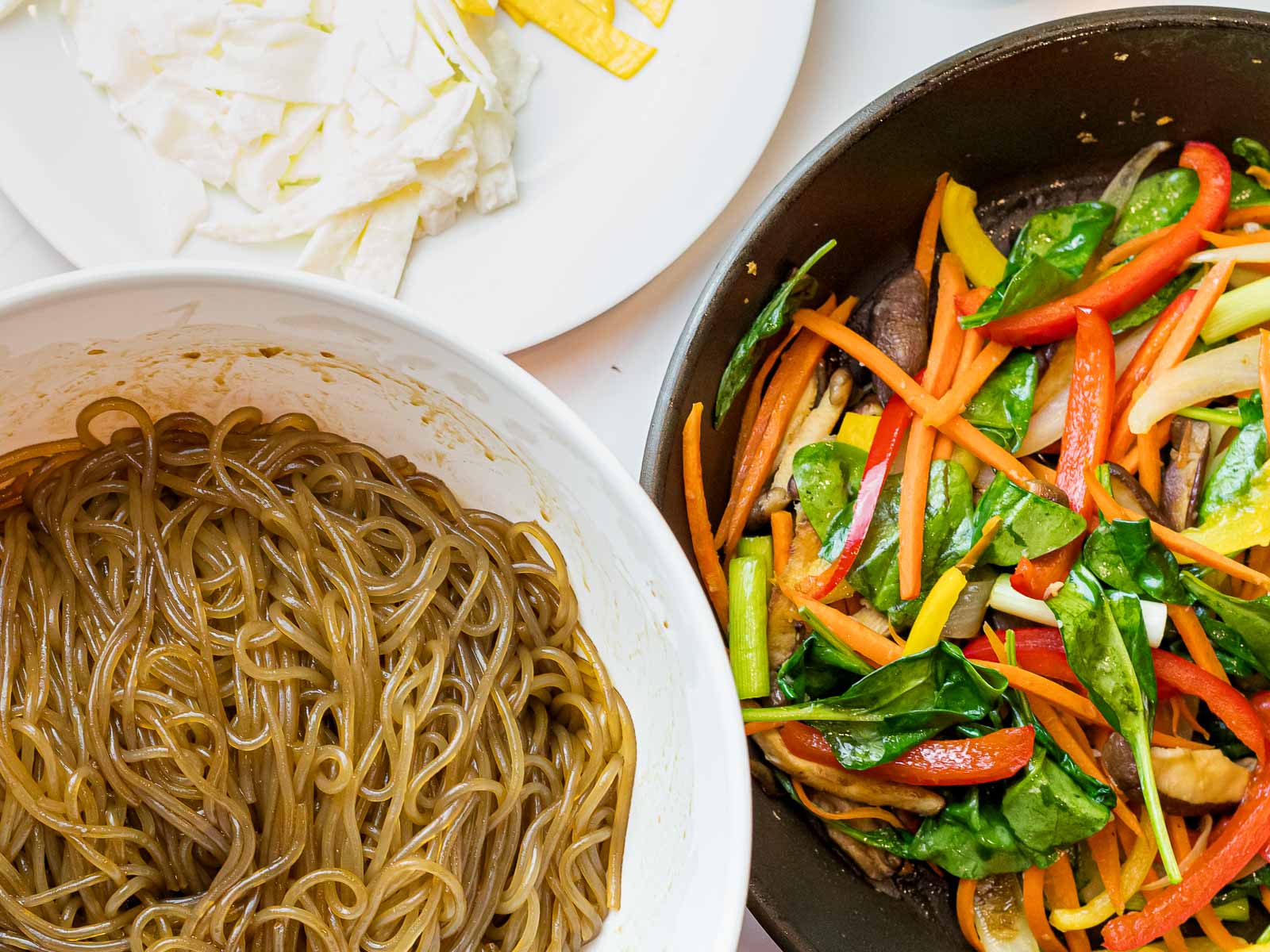
- Add the stir fried vegetables to the glass noodles and toss them to combine. Garnish with sesame seeds and scallions.
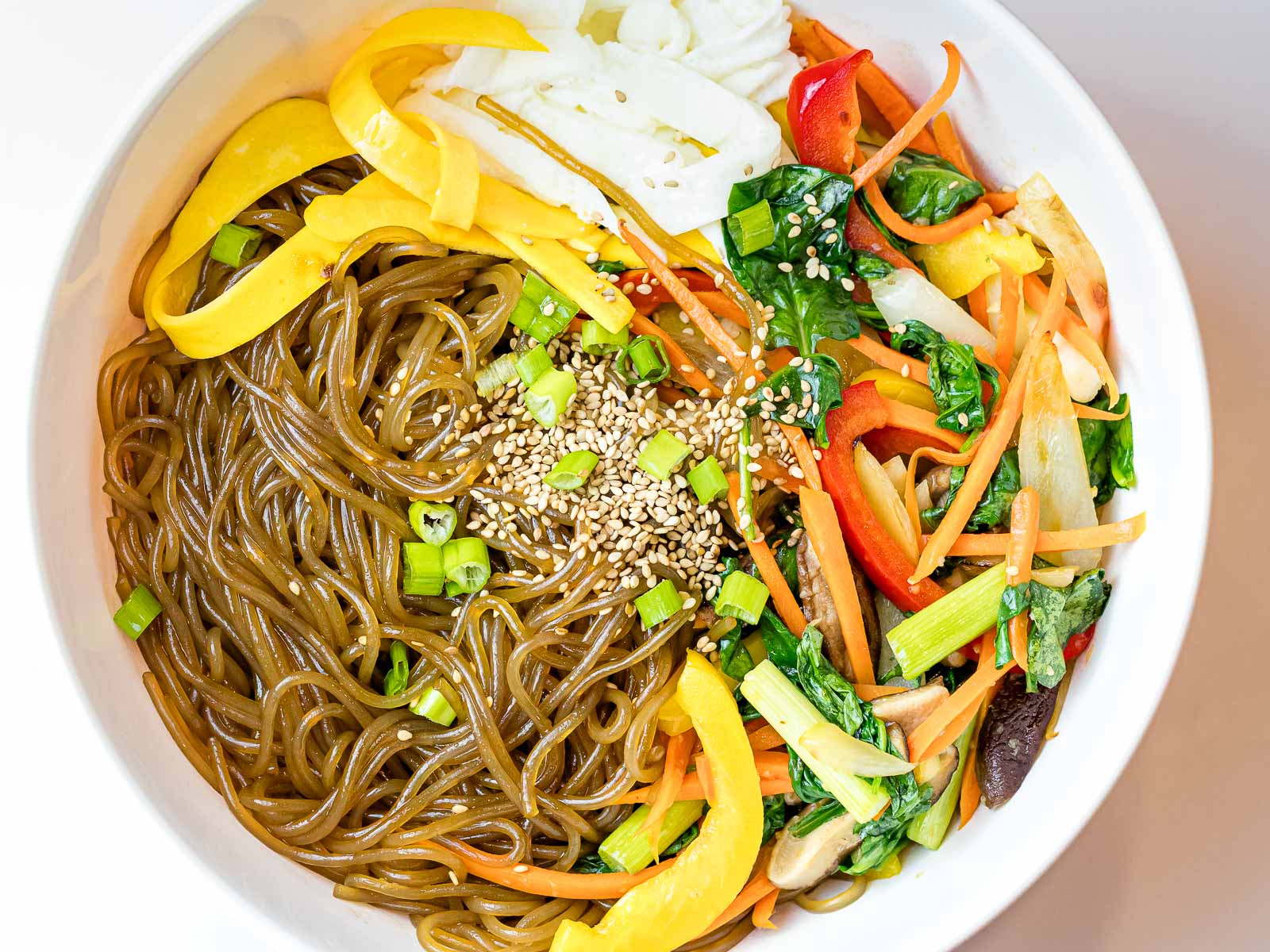
- Serve immediately or store it in an airtight container and keep it in the fridge for up to 3 days.
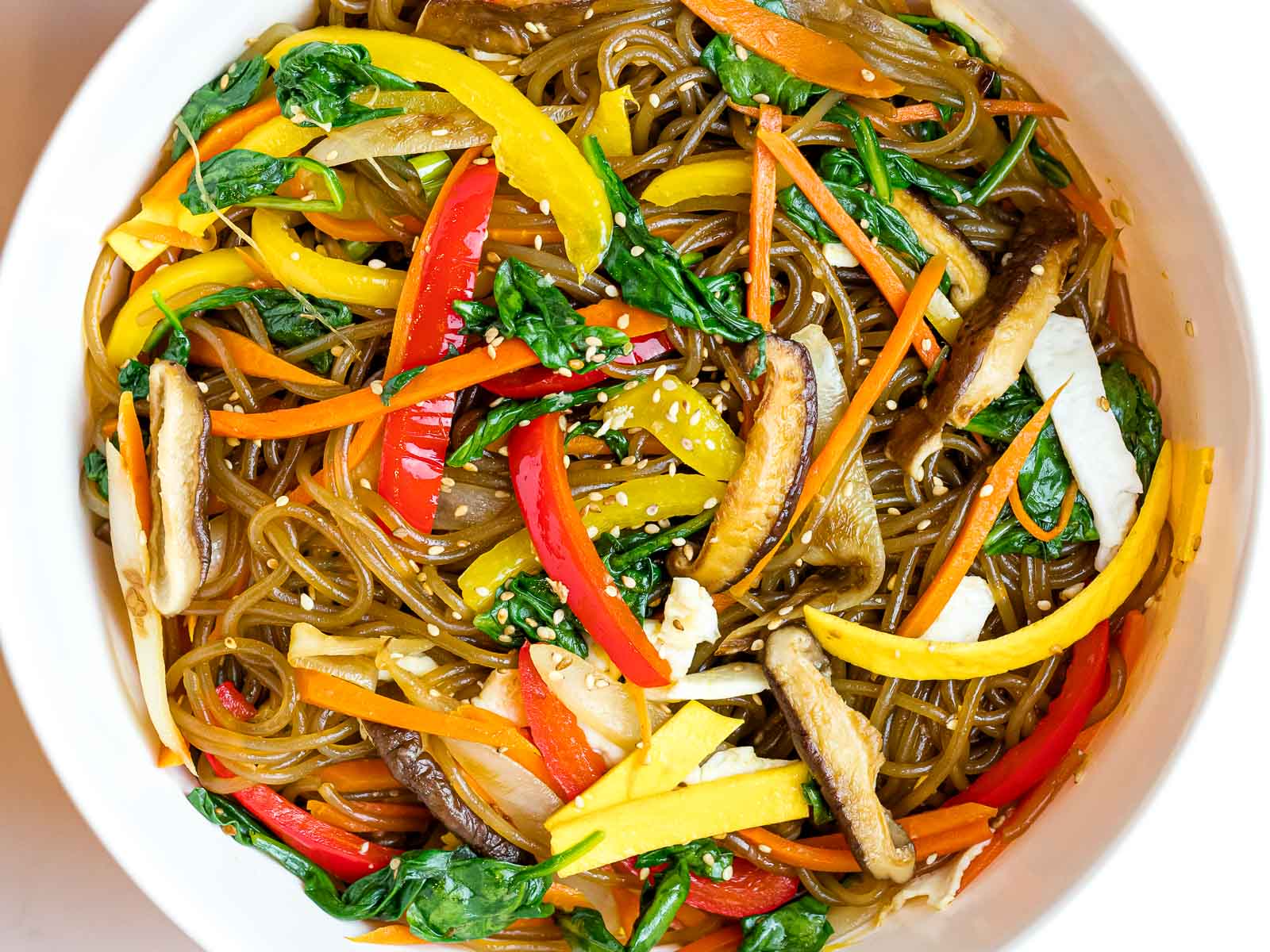
Expert tips & tricks
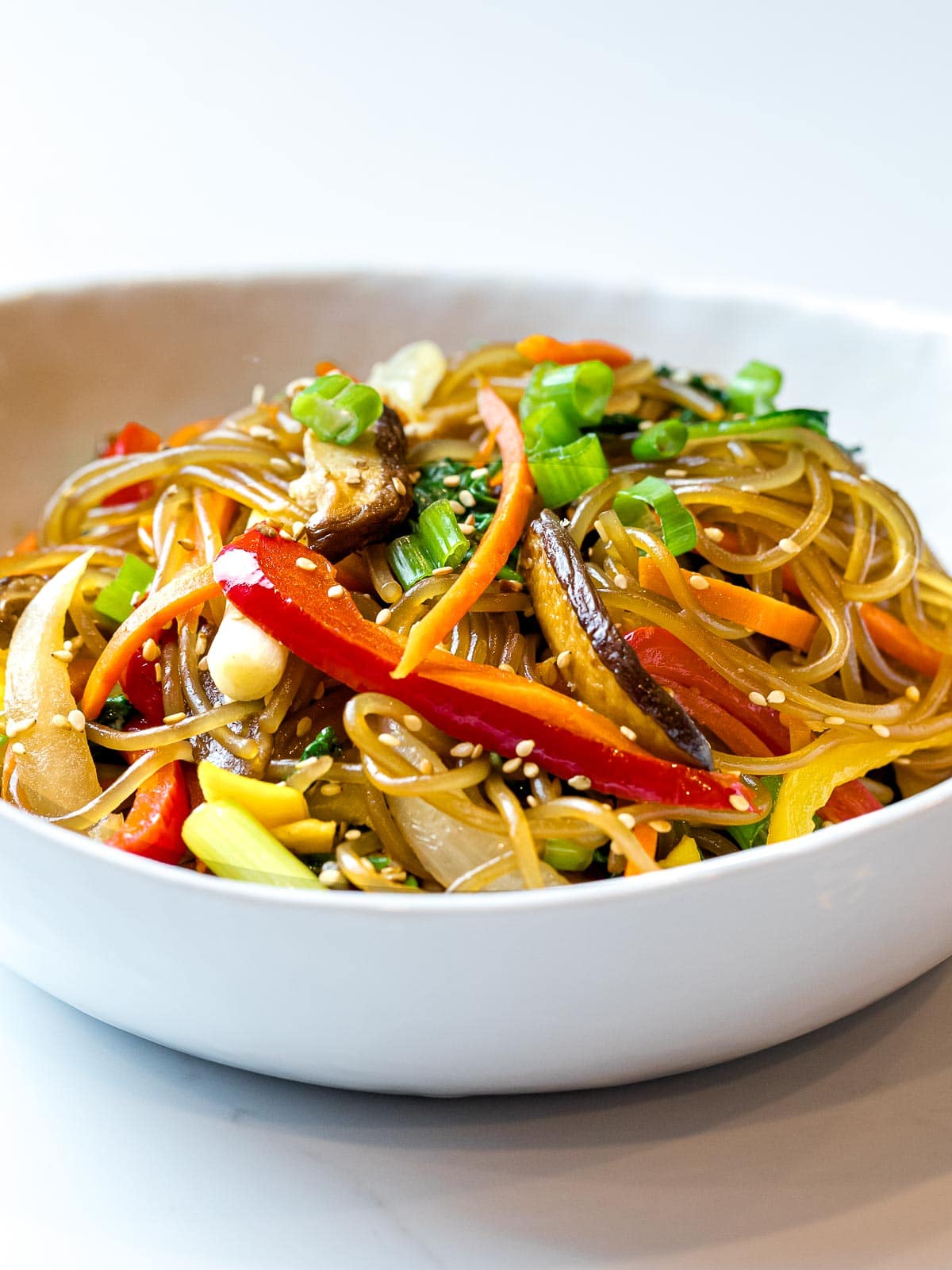
- Don't overcook the glass noodles - the noodles should have a chewy, al dente texture. Overcooking the noodles also prevents it from absorbing all of the japchae sauce so keep an eye on the timer.
- Don't overcook the vegetables - the vegetables should be crisp and crunchy to contrast with the chewy texture of the noodles. Add the vegetables in at different times according to their cook time. Vegetables that take longer should be added first while the ones that take shorter (like spinach) should be added last.
- Add the sauce while the noodles are hot - this helps the noodles absorb all the sauce and prevents them from sticking together. I prefer not to rinse the noodles as it makes them too watery for me and they absorb flavors better when they're hot.
Ingredient substitutions & variations
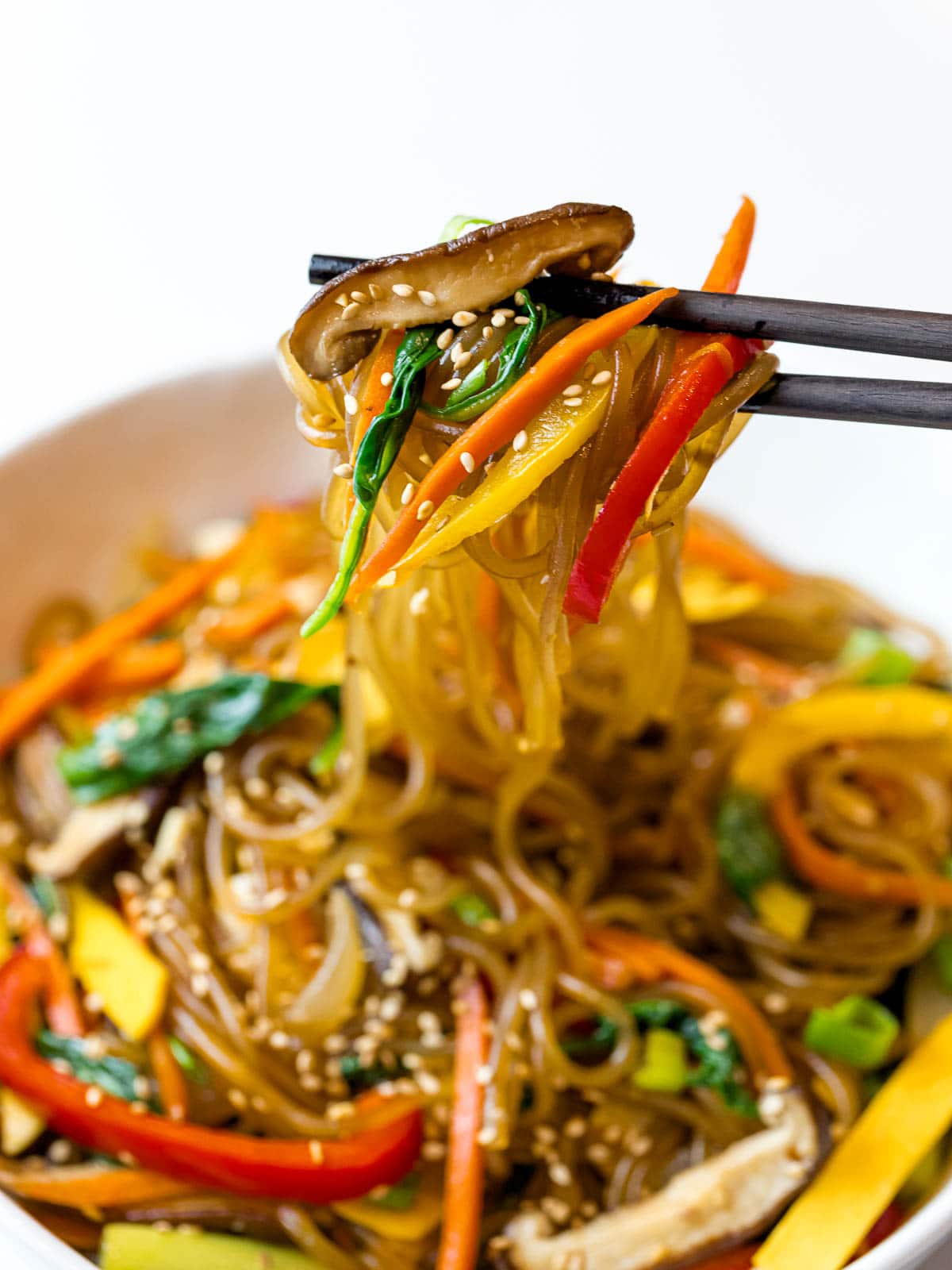
- Other vegetables - broccoli, zucchini, green beans, sugar snap peas, cabbage
- Other vegetarian proteins - fried tofu, edamame, tempeh
- Non-vegetarian proteins - pork, chicken, beef
- Make it spicy - add a tablespoon of Korean red pepper flakes (gochugaru) to the sauce
Storing & reheating leftovers
- Store leftovers in an airtight container and keep it in the fridge for up to 3 days.
- You can make this ahead the day before and serve it the next day.
- The noodles will harden and turn opaque when cold.
- Reheat it in the microwave until the noodles get soft and turn translucent.
Frequently Asked Questions
Japchae (pronounced 'chop chay') is a traditional Korean glass noodle dish made with sweet potato starch noodles, stir fried colorful vegetables, protein, and toss together with a sweet and savory soy based sauce.
The literal translation of japchae means mixed vegetables. But overtime, Koreans started adding sweet potato starch noodles to this dish.
It's served during special occasions and holidays but can also be enjoyed as a regular side dish or entree. It's popular because of its versatility and ability to make ahead.
The noodles are made with sweet potato starch noodles and are naturally low in fat and calories. They are also gluten free but as always check the packaging for details for your specific brand.
This recipe can be serve both hot and cold. It tastes just as good served at room temperature or heated up. It's a popular dish in Korea for gatherings because of this reason.
Absolutely! My favorite way to make this spicy is adding Korean red pepper flakes (gochugaru) to the sauce. You can find it in most Asian grocery stores.
Recipes to serve with japchae:
- Korean Shiitake Mushroom Side Dish
- Korean Soybean Sprout Side Dish
- Spicy Korean Radish Salad
- Spicy Korean Cucumber Salad (Oi Muchim)
- Stir Fried Garlic Scapes
- Korean Dried Zucchini Side Dish
More noodle recipes:
- Yaki Udon (Stir Fried Udon Noodles)
- Spicy Szechuan Noodles with Garlic Chili Oil
- 15 Minute Vegan Thai Peanut Noodles
- Pad See Ew Thai Noodles
- 15 Minute Asian Chicken Noodle Soup
Recipe
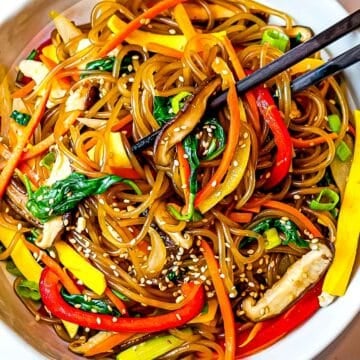
Easy Japchae (Korean glass noodle stir fry)
Equipment
☑ Ingredients
- 8 oz Korean glass noodles - - japchae noodles, sweet potato starch noodles, or dangmyeon
- 2 large eggs - - whites and eggs separated
- 2 Tablespoons avocado oil
- 6 large shiitake mushrooms - - sliced ⅓ inch thick
- ⅓ large yellow onion - - sliced ⅓ inch thick
- ½ large red bell pepper - - julienned ¼ inch thick
- ½ large yellow bell pepper - - julienned ¼ inch thick
- ½ large carrot - - julienned ⅛ inch thick
- 3 cups baby spinach - - packed
- 3 cloves garlic - - minced
- 2 stalks scallions - - chopped, for garnish
- 2 teaspoons toasted white sesame seeds - - for garnish
Sauce:
- 3 Tablespoons low sodium soy sauce
- 2 Tablespoons brown sugar - - packed
- 1 Tablespoon dark soy sauce
- 1 ½ Tablespoons sesame oil
Instructions
- These japchae noodles come together quickly so prep all your ingredients ahead of time.
- Mix all the sauce ingredients together in small bowl until the sugar dissolves. Set it aside.
- Cook the Korean glass noodles according to the directions. Be sure not to over cook them as they can get soggy. Drain the water and add the hot noodles to a large bowl.
- Add the sauce to noodles and toss to combine. Let sit on the counter for the noodles to absorb the flavors of the sauce. Any excess sauce will be absorbed by the noodles.
- Cook the egg whites and egg yolks separately in a flat pan and cut them into strips. Set it aside.
- Heat a pan over medium high heat and add the mushrooms and the onions. Stir fry them for 2 minutes.
- Next, add the red and yellow bell peppers, carrots, and minced garlic to the pan. Stir fry for 1 - 2 more minutes. Be careful not to overcook the vegetables, they should still be crunchy.
- Add the spinach and toss everything together until the spinach starts to wilt. Add a pinch of salt to season the vegetables and remove it from the heat.
- Add the stir fried vegetables and egg to the seasoned glass noodles. Toss everything to combine and garnish with sesame seeds and chopped scallions.
✎ Recipe Notes
- Leftovers - store in an airtight container and keep it in the fridge for up to 3 days.
- You can make this ahead the day before and serve it the next day. The noodles will harden and turn opaque when cold but will get soft and turn translucent once reheated.
- Try not to overcook the glass noodles - they should have a chewy, al dente texture. It also prevents them from absorbing all of the sauce so keep an eye on the timer.
- Try not to overcook the vegetables - they should be crisp. Add the vegetables in at different times according to their cook time. Vegetables that take longer should be added first while the ones that take shorter (like spinach) should be added last.
- Add the sauce while the noodles are hot - this helps the noodles absorb all the sauce and prevents them from sticking together.
Nutrition
*Nutritional information is an estimate, calculated using online tools.



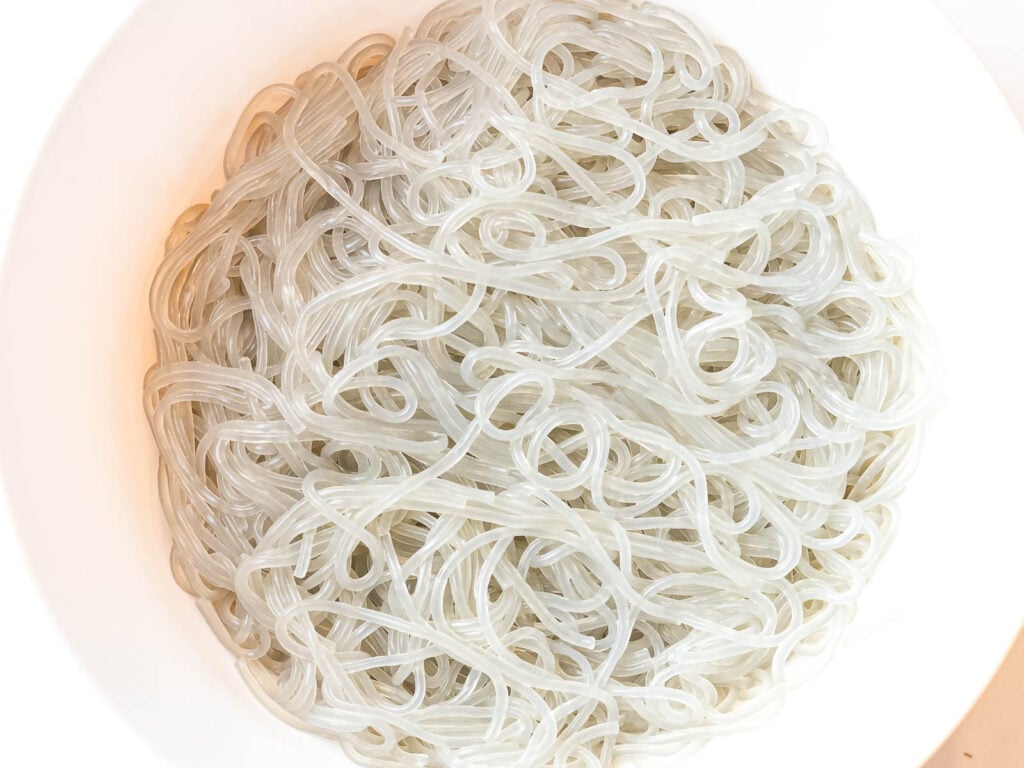
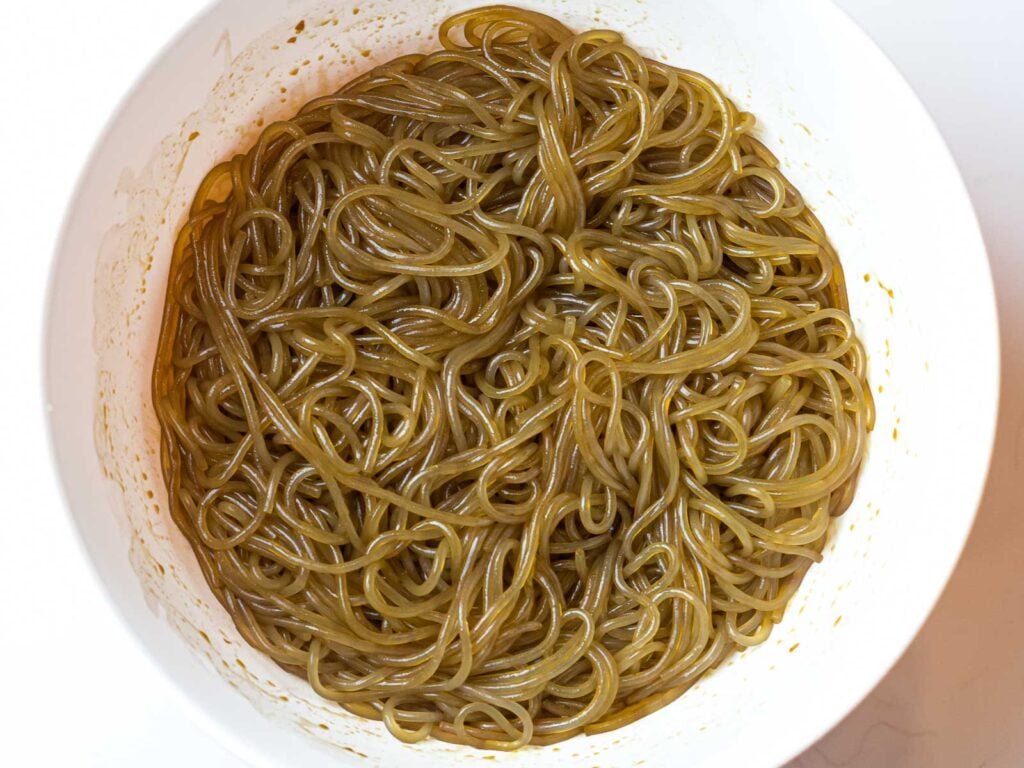
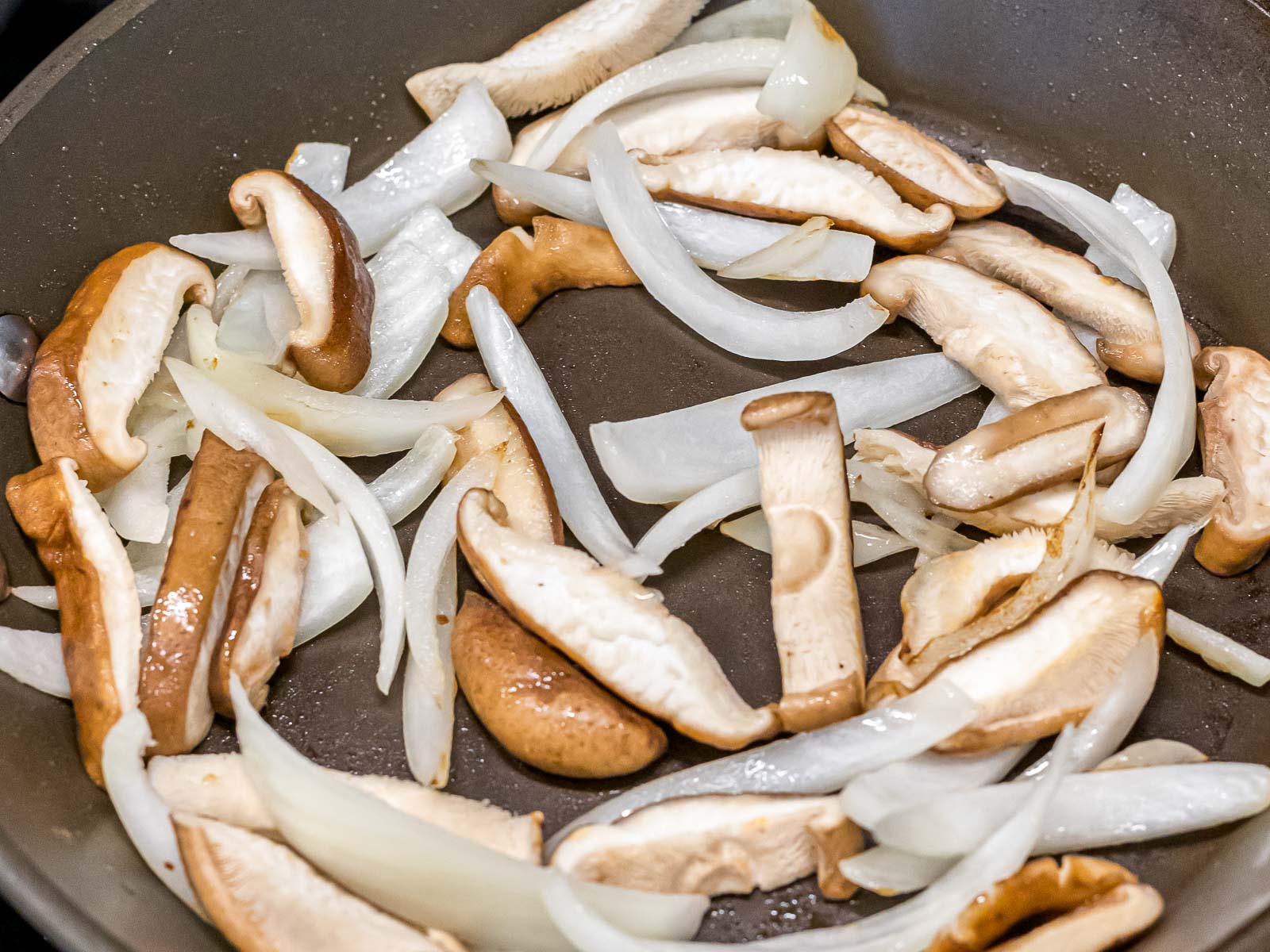
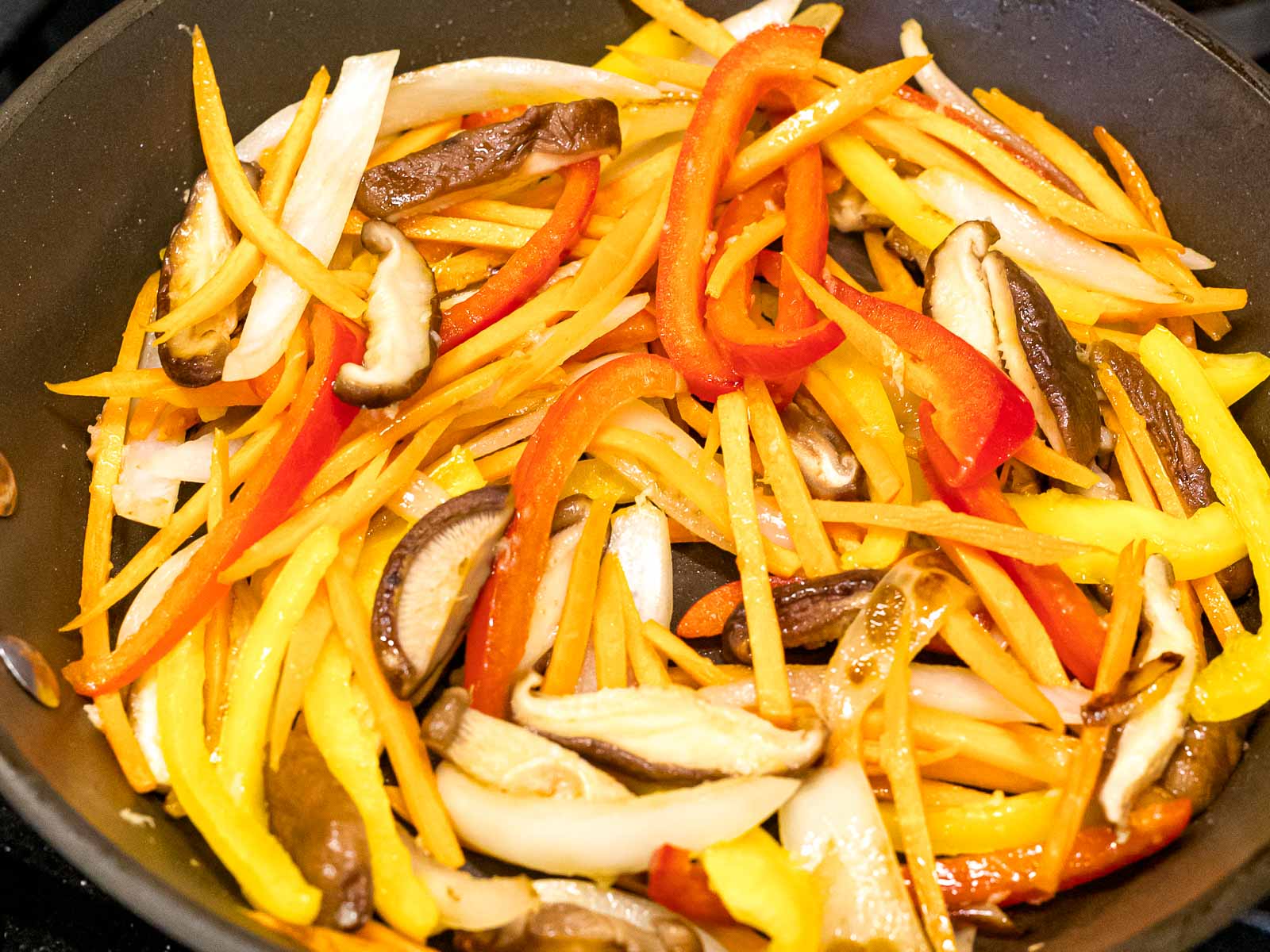
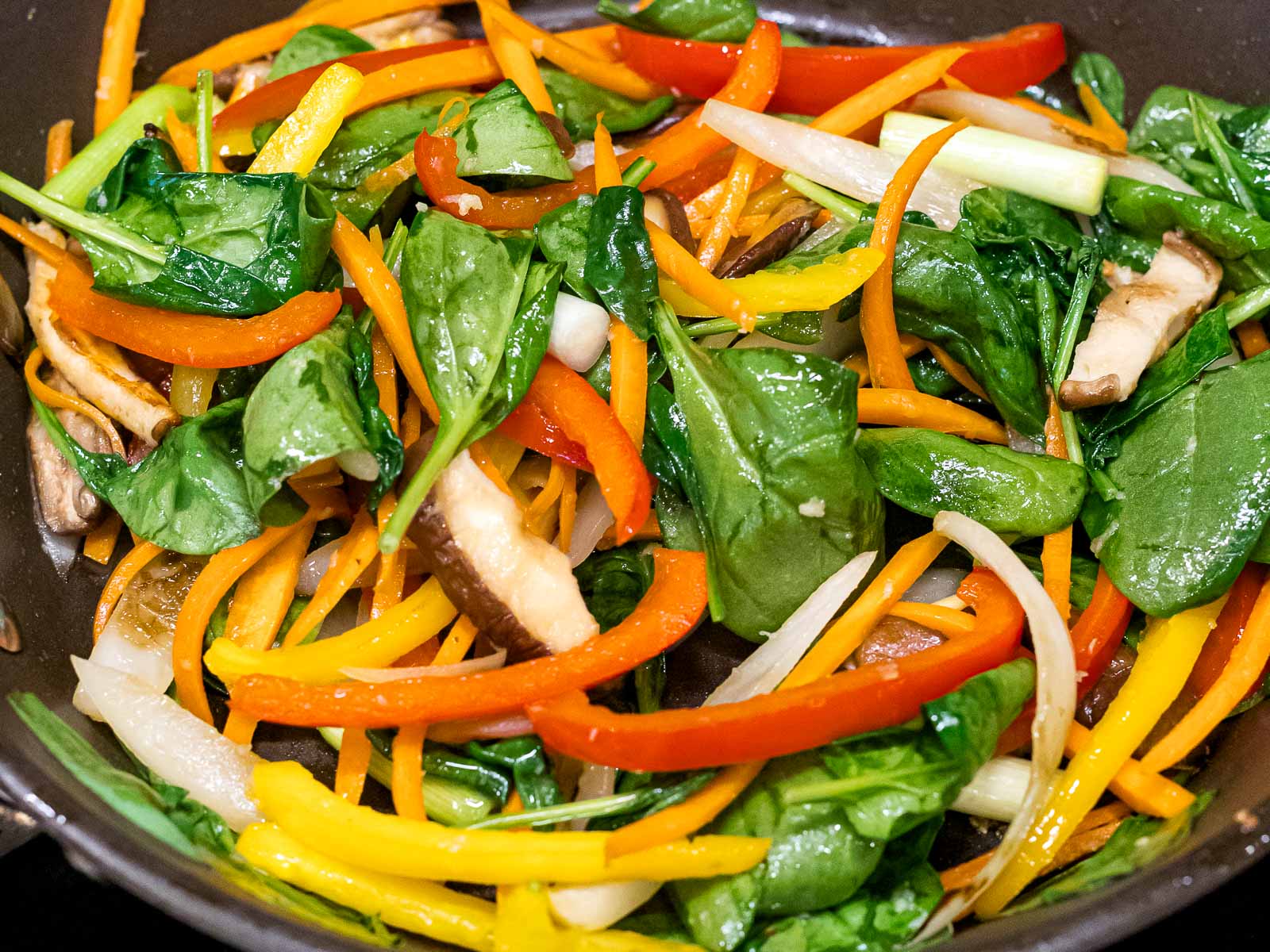
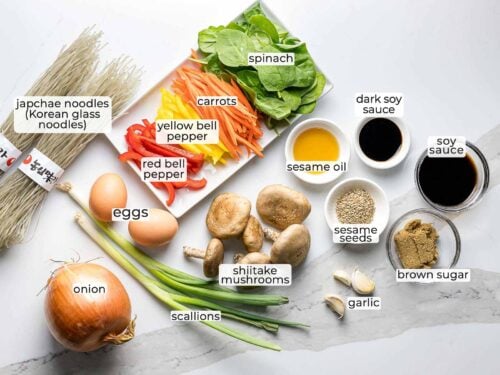
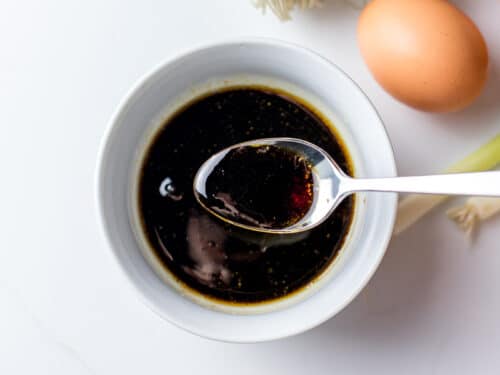
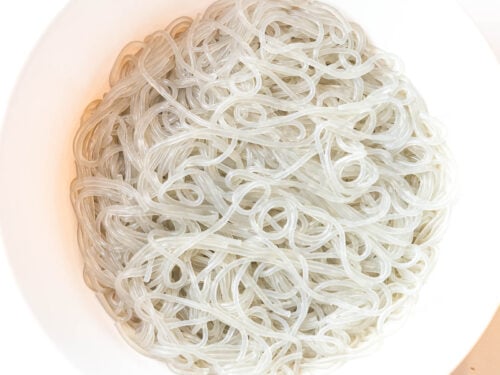
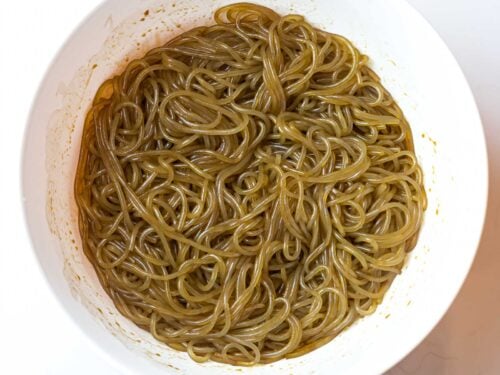
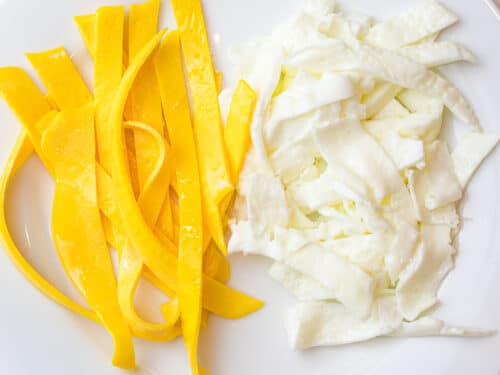
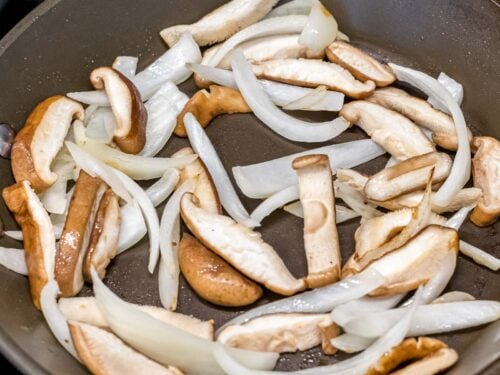
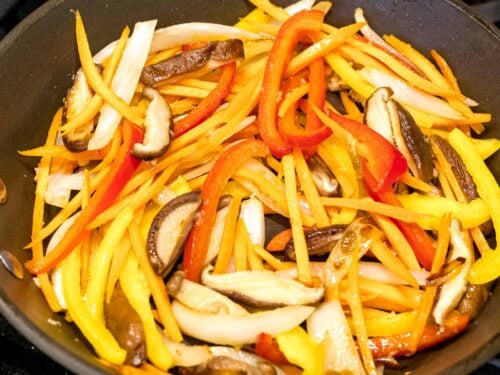
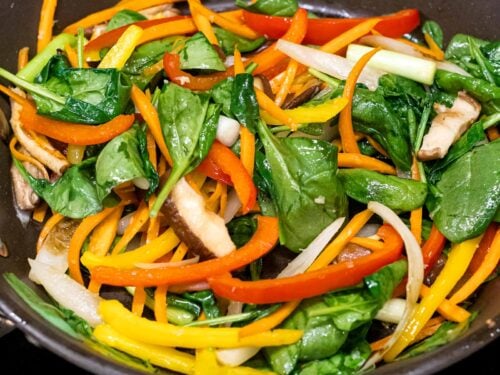
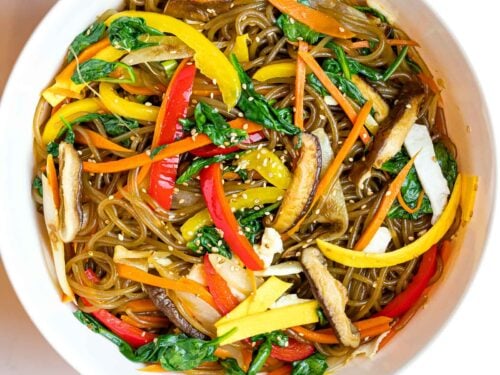
Jessie
This glass noodle recipe looks so yummy!! I’ve never made a Korean dish before, but my husband and both love the flavors of the culture! I can’t wait to try this!
Audrey
I'm such a huge Korean food fan! This was so good.
Julia
Wow, I love this dish, I'm such a huge fan of non-flour noodles (I think they have more bite to them) and the vegetables really liven up the plate!
Ksenia
I love Japchae! It’s usually my order of choice in Korean restaurants. Thanks for enabling me to make it at home!
Sarah
Absolutely love any type of noodle dish and this one didn't disappoint. Definitely hit the spot!
Beth
Yummy! My family and I are going to love this recipe! Looks so delicious and flavorful! So excited to make this!
Maddie
I love japchae and haven't had it forever! I'm so happy to have found this recipe - thank you for sharing.
Kyleigh
I love the sauce. It adds so much flavor to these noodles!